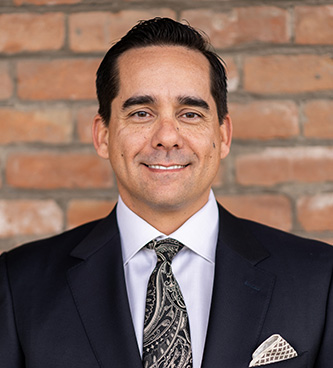Five New Automobile Technologies Making Driving Safer for Arizonans
The automobile industry was introduced to the United States in 1893. Of course when brothers Charles and Frank Duryea built the first successful gas powered car, it is unlikely they envisioned the widespread use and necessity of motor vehicles that we see today. After all, their vehicle was simply a horseless carriage that could travel no more than 8 miles per hour. At that time, there were so few drivers on the road that vehicle safety was hardly a concern. Even as automobiles gained more popularity, safety technologies were slow to develop:
Now, there are over 26 million licensed drivers in the United States. Safety technologies and laws are a must to promote driver safety. However, as Arizona Injury Lawyers, we are unfortunately aware that accidents and injuries can and will happen regardless of the safety precautions and technological developments. Car crashes are still the leading cause of death among unintentional accidents. Luckily, as our technology improves, so too does automobile safety. Here are five new automobile technologies that will improve driver safety in Arizona.
Blind Spot Sensors
In driving school, you were likely taught to look over your shoulder when changing lanes to check your blind spots. Nowadays, many cars have sensors that notify drivers of any potential threats in your blind spots. These sensors are accompanied with internal lights or sounds to alert the driver that another vehicle or object is next to them. This allows drivers to change lanes while also keeping their eyes on the road ahead.
Auto Braking
Lasers, cameras, radars, and other sensors are now being used to determine if objects or other vehicles are in their present path. After these sensors identify an upcoming object, their technology is able to determine the speed differential between your vehicle and the object ahead of you. If there is a significant speed differential, a collision is more likely, so an automatic brake system would activate to avoid the collision.
Automatic Lane Keeping
As a precursor to autonomous cars, automobile manufacturers are implementing automatic lane keeping technologies that prevent drivers from veering off the road or into oncoming traffic. The more “primitive” versions of this technology involve sounds that notify the driver that they are leaving their lanes. The advanced lane keeping technologies actually steer the car to the center of the lane. Cameras on the sides of the vehicle identify the parameters of a given lane. If your car begins to steer outside those limits, the vehicle will automatically navigate you back to the middle of the road.
Vehicle-to-Vehicle Communication
Most car crashes occur due to the fault of a driver. However, what if it was possible for our vehicles to talk to one another to limit the danger of human error? This is beginning to become a reality as wireless technology between vehicles is quickly developing which would allow cars to exchange information regarding their speed and location. With this software, a vehicle would have complete awareness of other vehicles in proximity. Other vehicles will be able to transmit messages to a nearby car and could preemptively identify potential crash threats as they develop. With vehicle proximity awareness, your car would audibly alert you or use automatic brakes or lane keeping technology to keep you safe.
Self-Driving Vehicles
The most publicized vehicle technology today is the development of fully autonomous vehicles. While you can see Google and Uber testing their autonomous cars on the Phoenix roadways, widespread use of these self-driving automobiles is not expected for several years. However, the benefits are hard to deny. Not only will they include most, if not all, of the advanced safety technologies above, they seemingly take the most dangerous aspect of driving out of the equation: Human error.
Nonetheless, car accidents will undoubtedly continue to happen. As imperfect beings, we tend to rely on technologies that we become accustomed to. We expect our vehicles to stop when we press the brakes. We are confident that our airbags will deploy if necessary. However, what happens when safety equipment fails us? Who is liable when self-driving cars cause a crash? What if a vehicle’s automatic braking system failed, or blind spot sensors did not alert the driver of a potential danger? These are issues that we, at Torgenson Law, anticipate handling in the not so distant future.
Even with these safety developments, you can never be too careful on the road. There are over 5 million drivers in Arizona. Many young drivers are constantly distracted, road rage leads to reckless driving, and drunk driving is still a sad but common occurrence. It is your duty as an Arizona driver to be attentive on the roads to avoid placing others in danger.
If you or a loved one is injured in a car accident, call Torgenson Law at (602) 726-0747. Regardless of technological developments, Arizona’s Injury Lawyers will be here to represent your personal injury needs.

John Torgenson is a highly experienced personal injury lawyer with over 20 years of practice in Arizona. He earned his Bachelor’s degree from the University of Utah and his Juris Doctor from Notre Dame. John has a proven track record of securing substantial verdicts and settlements, including an $8.25 million recovery for a gunshot injury victim. His expertise has earned him AVVO ratings and recognition as a Super Lawyer.
John is also a sought-after lecturer on personal injury law, sharing his extensive knowledge with peers and aspiring attorneys. Beyond his legal practice, John is an avid golfer and actively supports organizations like the Military Assistance Mission, Arizona School for the Arts, Page Balloon Regatta, University of Arizona Foundation, Junior Achievement of Arizona, and the Tim Huff Pro Bono Golf Classic.
Passionate about advocating for injury victims, John dedicates his career to battling insurance companies and corporate interests, ensuring that the rights of those who are hurt are vigorously defended.
